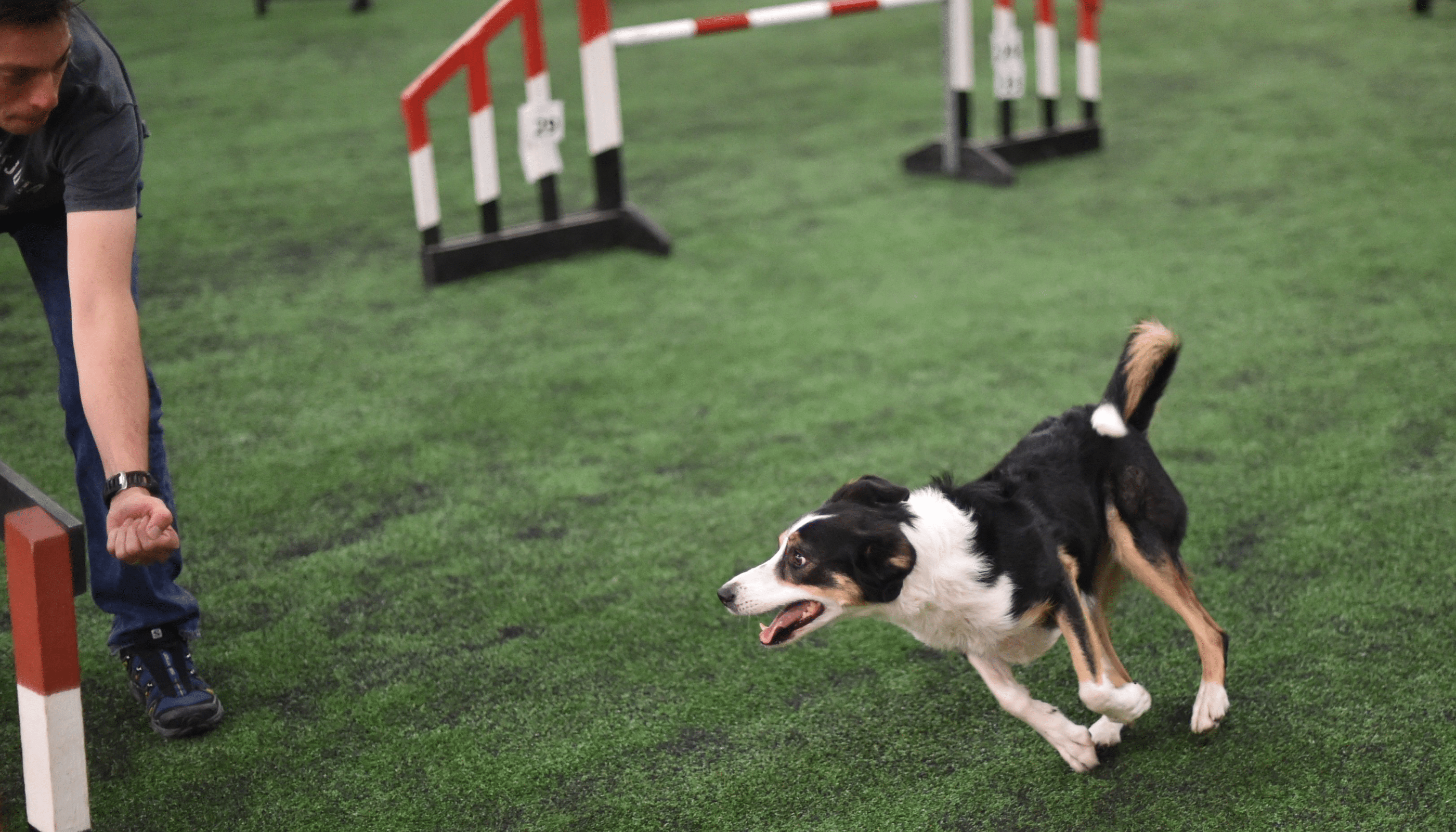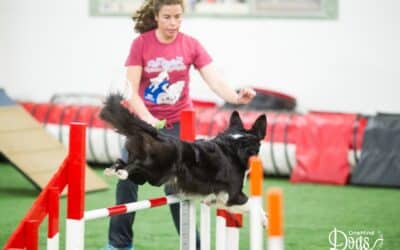About 87-90 % of humans are right-handed. But what about our dogs?
We can’t be absolutely sure whether dogs are strictly right and left pawed, however, researchers at the Animal Behaviour Centre of Belfast’s Queen’s University found that dogs have paw preferences in certain tasks, and are generally consistent in their dominant paw over time.
So what does that mean for agility?
This post is an excerpt from a full article available for OneMind Dogs premium members, written by our leading Coach and creator of the OneMind Dogs method, Janita Leinonen. The full version includes illustrations, and detailed advice on how to help your dog with lead changes.
Upgrade now to check it out!
Turning and the lead leg
A dog can only turn to the side of his leading leg: to be able to turn right he needs to have his right leg leading, and to turn left, the left leg needs to be leading. If the dog needs to turn left from being in the right lead, he needs to perform a lead change.
How does a dog choose the lead leg?
Dogs normally turn easier and tighter to the side where they feel more comfortable to do so. They can sometimes choose the easier lead leg for example in straight lines where the handler is not clearly on either side of the dog.
This can be a reason for example to side differences in some handling techniques: the dog is successful in Rear Crosses when he gets to turn right but Rear Crosses to left need more training, or the dog will turn tight to the right with a Reverse Wrap but will turn wide or slice the jump when turning left.
There are three main reasons how the dog chooses the lead leg in agility course:
1. Dogs are naturally always preparing to turn towards the handler.
Based on this, they prefer to choose the handler’s side leg to lead. Most of the techniques are based on this fact.
2. The dog chooses the lead leg based on the direction of the turn he needs to do.
If the dog’s path turns to the left, the left leg is leading. If the dog turns to the right, the right leg is leading.
3. The dog chooses the lead leg to be able to perform the obstacle.
A curved tunnel is a great example of this: to be able to turn in a curved tunnel, the dog needs to have the leg of the inside curve leading.
How to help your dog with lead changes
You can start training lead changes with your dog from as early as Foundations level, and can help them succeed with lead changes whether they’re obstacle focused, handler focused and anything in between.
Want to check out the full article? Upgrade to Agility Premium below for access to this article and hundreds more.



